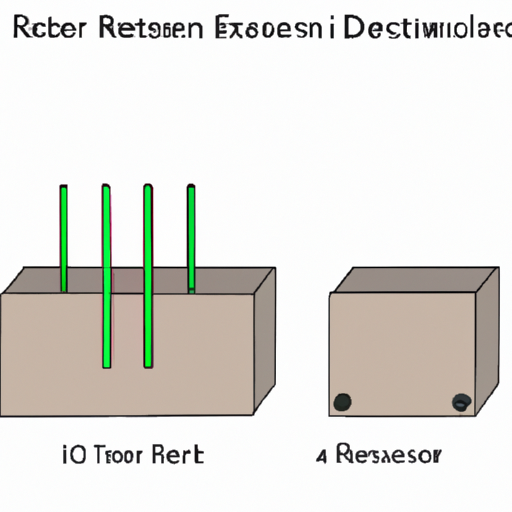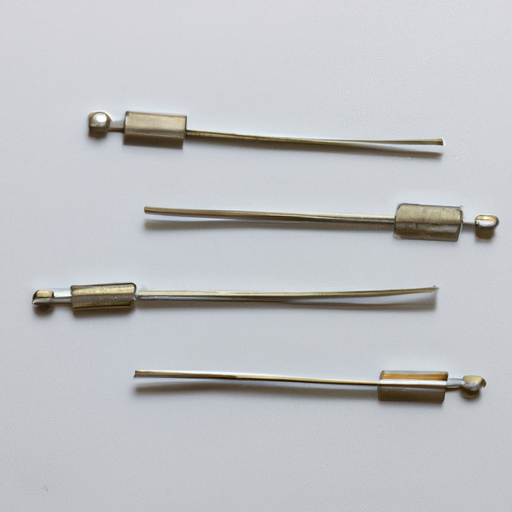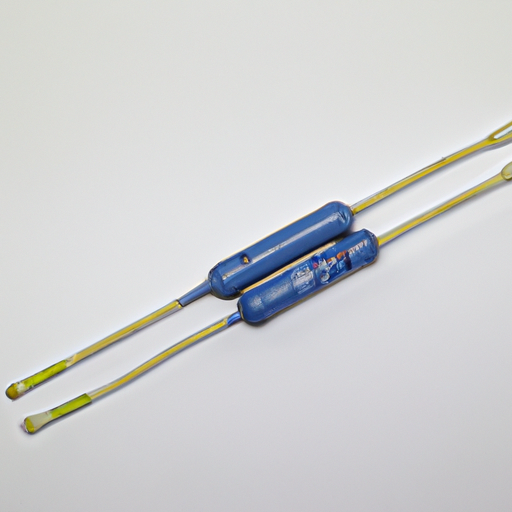What are the latest manufacturing processes for load resistors?
What are the Latest Manufacturing Processes for Load Resistors?
I. Introduction
Load resistors are essential components in electrical and electronic systems, serving to manage and dissipate electrical energy. They play a critical role in various applications, including power supplies, amplifiers, and testing equipment. As technology advances, the manufacturing processes for load resistors have evolved significantly, incorporating new materials and techniques to enhance performance and efficiency. This blog post explores the latest manufacturing processes for load resistors, highlighting innovations, challenges, and future trends.
II. Historical Context
A. Traditional Manufacturing Techniques
Historically, load resistors were primarily manufactured using traditional techniques such as wirewound and carbon composition methods. Wirewound resistors, made by winding a metal wire around a ceramic core, offered high precision and stability but were often bulky and less efficient. Carbon composition resistors, on the other hand, utilized a mixture of carbon particles and a binding agent, providing a more compact solution but with limitations in power handling and temperature stability.
B. Evolution of Load Resistor Technology
The transition to modern materials and manufacturing techniques has significantly impacted load resistor technology. The introduction of metal film, thick film, and thin film technologies has allowed for greater precision, stability, and miniaturization. These advancements have paved the way for more efficient and reliable load resistors, meeting the demands of contemporary electronic applications.
III. Current Manufacturing Processes
A. Material Selection
1. Conductive Materials
The choice of conductive materials is crucial in load resistor manufacturing.
Metal Film: Known for its excellent temperature stability and low noise, metal film resistors are widely used in precision applications.
Thick Film: This technology involves printing a resistive paste onto a substrate, offering a cost-effective solution for high-volume production.
Thin Film: Thin film resistors provide superior performance in terms of accuracy and stability, making them ideal for high-end applications.
2. Substrate Materials
The substrate material also plays a vital role in the performance of load resistors.
Ceramic: Ceramic substrates are favored for their thermal stability and electrical insulation properties, making them suitable for high-power applications.
Epoxy: Epoxy substrates are often used in lower-cost applications, providing adequate performance while being lightweight and easy to mold.
B. Fabrication Techniques
1. Screen Printing
Screen printing is a widely used technique in the manufacturing of thick film resistors.
Process Overview: This method involves applying a resistive paste onto a substrate through a mesh screen, allowing for precise control over the resistor's dimensions and resistance values.
Advantages and Limitations: Screen printing is cost-effective for mass production but may have limitations in achieving very fine resolutions compared to other methods.
2. Laser Cutting and Etching
Laser cutting and etching have emerged as precision fabrication techniques in load resistor manufacturing.
Precision and Customization: These methods allow for intricate designs and custom shapes, enabling manufacturers to meet specific application requirements.
Applications in Load Resistor Manufacturing: Laser techniques are particularly useful for creating thin film resistors, where precision is paramount.
3. 3D Printing
3D printing is an emerging technology in the production of load resistors.
Emerging Technology in Resistor Production: This additive manufacturing process allows for the creation of complex geometries that traditional methods cannot achieve.
Benefits of Additive Manufacturing: 3D printing offers rapid prototyping capabilities, reducing lead times and enabling customization for specific applications.
C. Assembly and Integration
The assembly process is critical in ensuring the reliability and performance of load resistors.
1. Automated Assembly Lines
Automation has revolutionized the assembly of load resistors, increasing efficiency and consistency in production.
2. Quality Control Measures
Quality control is paramount in resistor manufacturing. Advanced testing methods, including automated optical inspection and electrical testing, ensure that each resistor meets stringent performance standards.
3. Testing and Validation Processes
Comprehensive testing and validation processes are implemented to verify the performance and reliability of load resistors, ensuring they meet industry standards.
IV. Innovations in Load Resistor Manufacturing
A. Smart Load Resistors
The integration of technology into load resistors has led to the development of smart load resistors.
1. Integration of Sensors
Smart load resistors can incorporate sensors to monitor temperature, voltage, and current in real-time, providing valuable data for system optimization.
2. Real-time Monitoring Capabilities
These capabilities enable proactive maintenance and improved performance in various applications, from automotive to industrial systems.
B. Eco-friendly Manufacturing Practices
Sustainability is becoming increasingly important in manufacturing.
1. Sustainable Materials
The use of eco-friendly materials in load resistor production helps reduce the environmental impact of manufacturing processes.
2. Waste Reduction Techniques
Implementing waste reduction techniques, such as recycling and efficient resource management, contributes to more sustainable manufacturing practices.
C. Customization and Flexibility
The demand for customized solutions is on the rise.
1. Tailored Solutions for Specific Applications
Manufacturers are now able to offer tailored load resistor solutions that meet the unique requirements of various applications, enhancing performance and efficiency.
2. Rapid Prototyping Techniques
Rapid prototyping techniques allow for quick iterations and adjustments, enabling manufacturers to respond swiftly to market demands.
V. Challenges in Load Resistor Manufacturing
Despite advancements, several challenges persist in load resistor manufacturing.
A. Material Limitations
The availability and performance of materials can limit the design and functionality of load resistors.
B. Cost Management
Balancing cost and performance is a constant challenge, particularly as manufacturers strive to incorporate advanced technologies and materials.
C. Meeting Industry Standards and Regulations
Compliance with industry standards and regulations is essential, requiring manufacturers to invest in quality control and testing processes.
VI. Future Trends in Load Resistor Manufacturing
A. Advancements in Material Science
Ongoing research in material science is expected to yield new conductive materials that enhance the performance and efficiency of load resistors.
B. Increased Automation and AI Integration
The integration of artificial intelligence in manufacturing processes will likely lead to greater automation, improving efficiency and reducing human error.
C. Potential for Miniaturization and Enhanced Performance
As electronic devices continue to shrink in size, the demand for miniaturized load resistors with enhanced performance will drive innovation in manufacturing processes.
VII. Conclusion
In summary, the manufacturing processes for load resistors have evolved significantly, driven by advancements in materials, fabrication techniques, and technology integration. Staying updated with these processes is crucial for manufacturers and engineers alike, as the demand for high-performance, reliable load resistors continues to grow. The future of load resistor manufacturing looks promising, with ongoing innovations poised to enhance performance, sustainability, and customization.
VIII. References
- Academic Journals
- Industry Reports
- Manufacturer Case Studies
This blog post provides a comprehensive overview of the latest manufacturing processes for load resistors, highlighting the importance of innovation and adaptation in a rapidly changing technological landscape.






